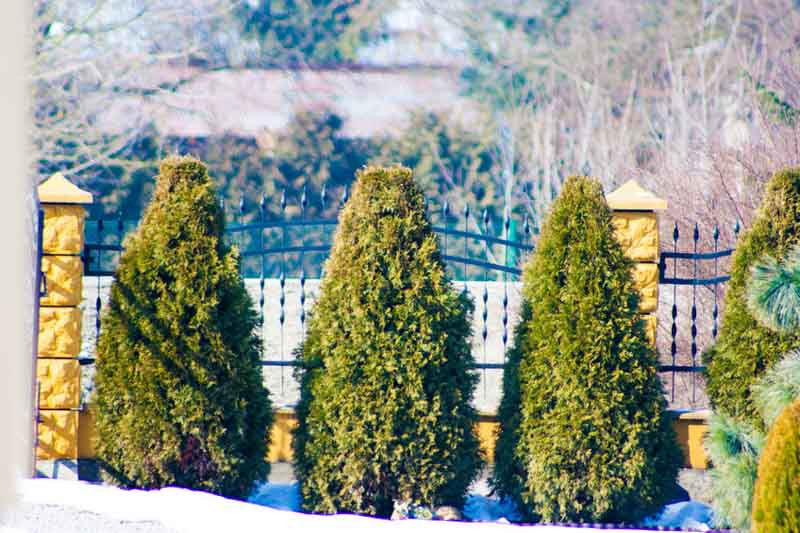Thuja (Arborvitae)
Thuja is a genus of coniferous trees in the Cupressaceae (cypress family), with five species native to North America and Asia. The two most common species in cultivation are Thuja occidentalis, or Eastern Arborvitae, native to eastern North America, and Thuja plicata, or Western Red Cedar, native to western North America.
Size: Thujas are renowned for their distinct growth habit: tall and columnar or pyramidal, with dense, scale-like leaves arranged in flat sprays. Depending on the species and cultivar, Thujas can range from dwarf forms less than a meter tall to towering trees over 200 feet (60 meters) in height.
Cones: Thujas produce small cones. Female cones are small, woody, and contain seeds, while male cones release pollen. Their “blooming” season is usually in the spring.
Hardiness: These trees are hardy, with most species tolerating cold to USDA zone 2. They prefer full sun to partial shade and thrive in well-drained soil.
Uses: Thujas are often utilized as privacy screens, windbreaks, or hedge plants due to their dense foliage and fast growth. They also make excellent specimen trees. Their wood, especially from T. plicata, is highly valued for its durability and resistance to decay, used in construction, shingles, posts, and even for crafting musical instruments.
One remarkable feature of Thujas is their longevity, with some individuals reportedly living for over a thousand years.

